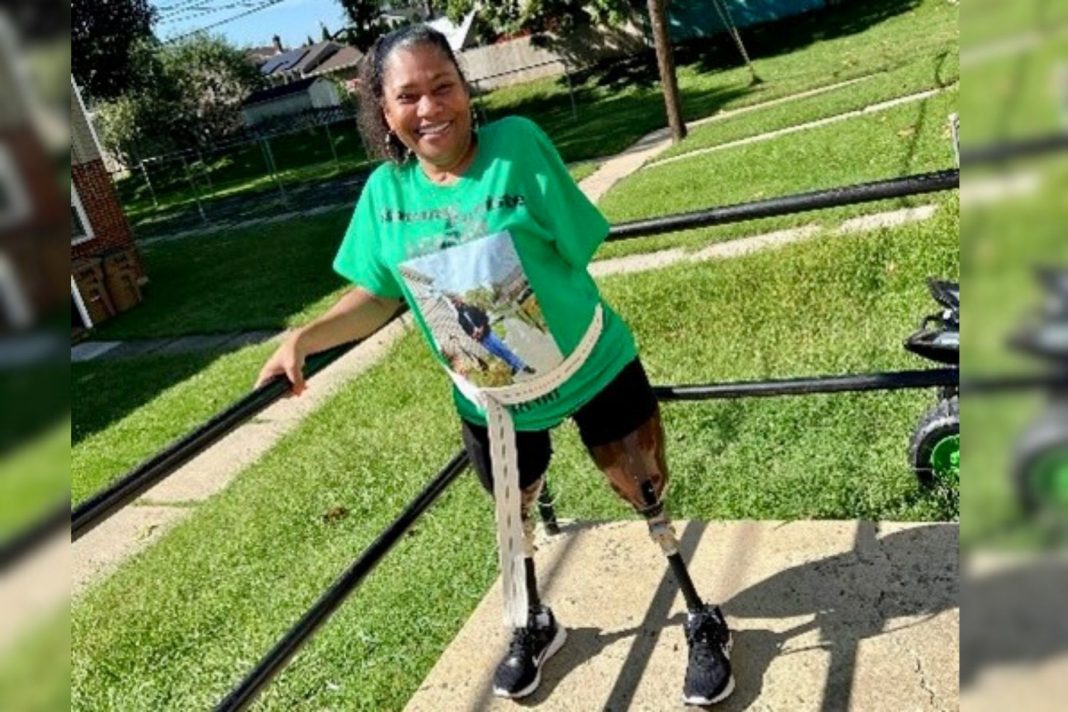Denise Wilson, a triple amputee, had one goal when she came to Reading Hospital Rehabilitation at Wyomissing, Acute Rehab Unit (ARU) in January – to learn how to walk with her prosthetic legs.
Wilson was in a car accident 13 years ago that resulted in a brain injury and the loss of her left arm and both legs. She had mixed results when visiting other physical rehabilitation hospitals and was discouraged, unsure if the physical therapy team at Reading Hospital would be able to help her.
Today, she is making significant progress and is able to walk short distances with assistance, thanks to her physical therapy “angels” at ARU. “The team learned with me and was very helpful. It was a good experience for all of us,” she said. “They treat you like you are family. That’s how it should be anywhere you go. You treat people exactly how you want to be treated, and that’s what they did.”

During Physical Therapist Month in October, Reading Hospital celebrates physical therapists who assist patients like Wilson in achieving their short-term and long-term rehabilitation goals. Her success demonstrates how valuable and inspiring the work of physical therapists is, and why their compassionate care is central to the hospital’s mission.
At Reading Hospital, physical therapists provide services across the continuum of care. The continuum includes the inpatient acute care setting at Reading Hospital, inpatient rehabilitation at RHRW, and seven outpatient therapy sites.
The physical therapy team offers many specialties (pelvic floor, aquatics, NICU, neurological, lymphedema, pediatrics and vestibular just to name a few). Physical therapists evaluate and treat patients of all ages and different life stages. They strive to improve movement, reduce pain and return function. Physical Therapists are often an important part of preventative care, rehabilitation, and treatment for patients with chronic conditions, illness, and injuries.
The Reading Hospital therapy teams’ goal is to return patients to the best quality of life possible. For some, that is recovering from knee surgery, and for others, it’s progressing after a major life event, such as a stroke. Patients appreciate therapists who push them, train them, and cheer them on during recovery. In turn, therapists love encouraging patients and using their expertise to help them regain their quality of life.
Wilson’s team taught her how to walk with her prosthetics, as well as how to function more independently without her limbs. She arrived in a wheelchair and graduated to a walker, which she uses with her daughter’s assistance. When she began therapy, the team helped her to create goal, such as walking 15 feet, and she was able to meet all of her goals before she was discharged.
Wilson is deeply grateful to her physical therapy team. As a way to pay it forward and serve as inspiration for other physical therapy patients, she is now training to be a Peer Visitor in the same unit that helped her so much. “You can end up in a dark place, especially when you first lose your limbs, so I try to give people hope that it is possible. Anything can be done if you put work into it and don’t give up.”


